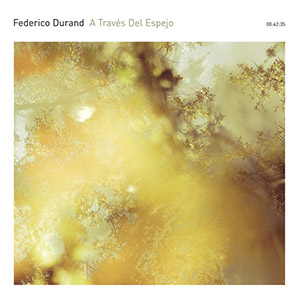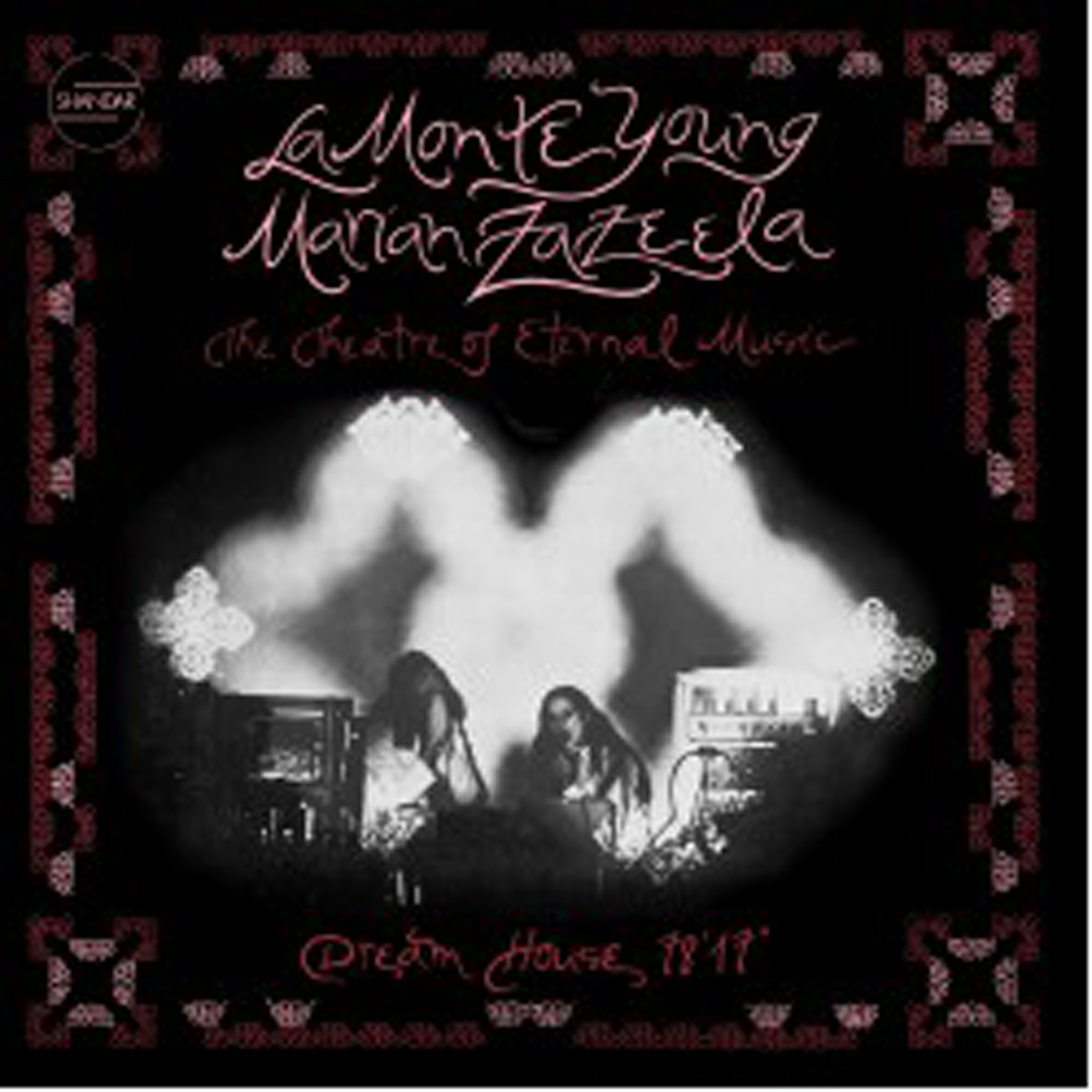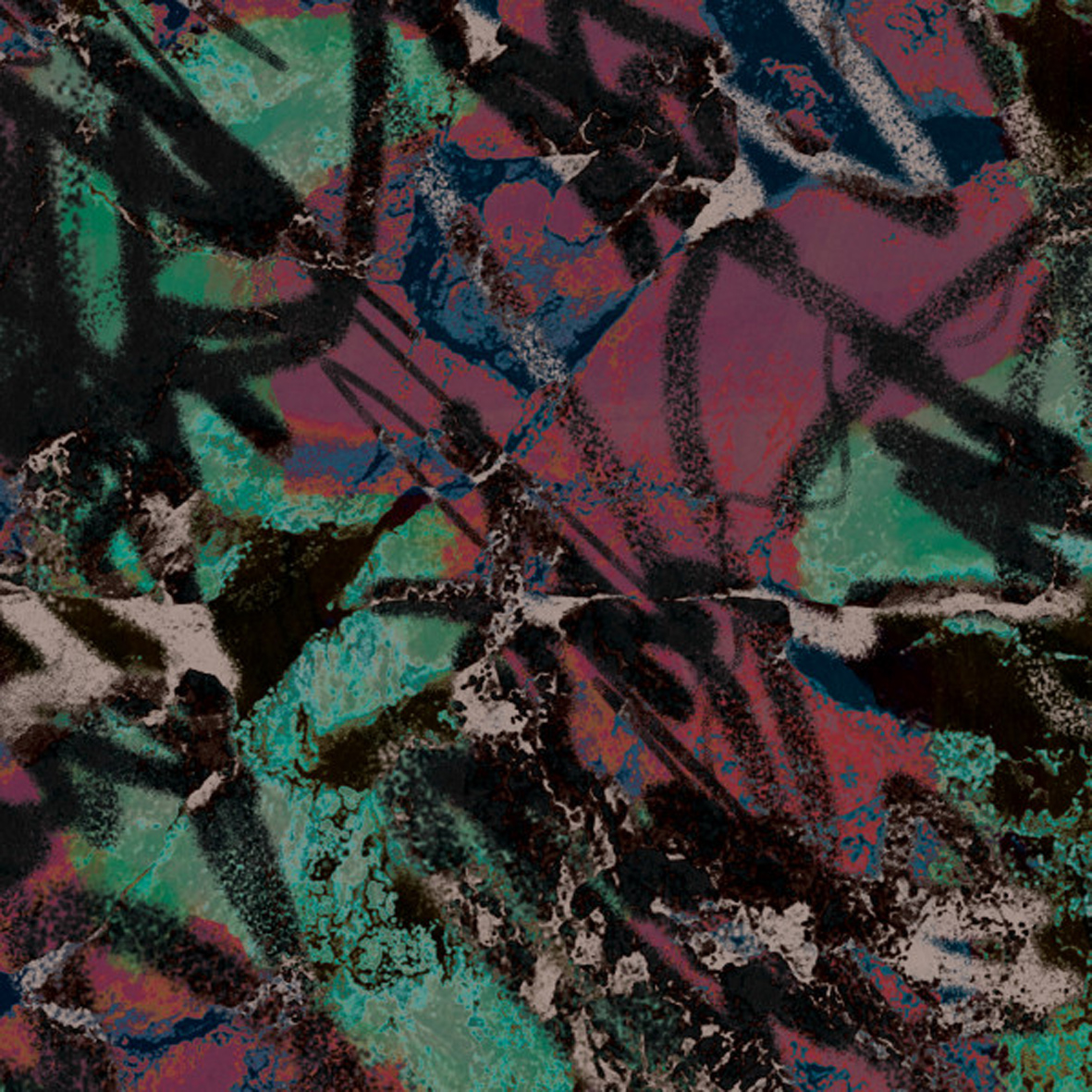 This trio featuring ubiquitous pianist Nils Frahm is one of the more pleasant surprises that have come across my path in recent memory, as I expected some sort of bloodless avant-jazz/post-rock hybrid, but was instead treated to quite an innovative and unique album (albeit quite an understated one as well).  I suspect a lot of that success is due to the band's exceedingly unconventional recording process, as they spent 8 years recording, re-recording, editing, recombining, and endlessly tweaking these pieces before finally concluding that The Gamble was finished.  Consequently, whatever these songs sounded like when they were originally played is probably a hell of a lot different from what ultimately wound up here.  To my credit, I was right about this album being a sort of avant-jazz/post-rock hybrid, but all of the instrumentation is so blurred together that The Gamble transcends either genre entirely and instead sounds like a strain of dub techno that is just as influenced by Latin percussion as it is by Jamaican dub. Except when it sounds like the greatest album that Tortoise never recorded.  Or when it sounds like something else entirely.
This trio featuring ubiquitous pianist Nils Frahm is one of the more pleasant surprises that have come across my path in recent memory, as I expected some sort of bloodless avant-jazz/post-rock hybrid, but was instead treated to quite an innovative and unique album (albeit quite an understated one as well).  I suspect a lot of that success is due to the band's exceedingly unconventional recording process, as they spent 8 years recording, re-recording, editing, recombining, and endlessly tweaking these pieces before finally concluding that The Gamble was finished.  Consequently, whatever these songs sounded like when they were originally played is probably a hell of a lot different from what ultimately wound up here.  To my credit, I was right about this album being a sort of avant-jazz/post-rock hybrid, but all of the instrumentation is so blurred together that The Gamble transcends either genre entirely and instead sounds like a strain of dub techno that is just as influenced by Latin percussion as it is by Jamaican dub. Except when it sounds like the greatest album that Tortoise never recorded.  Or when it sounds like something else entirely.
Two new shows just for you. We have squeezed out two extended release episodes for this weekend to get you through this week. They contain mostly new songs but there's also new issues from the vaults. The first show features music from Rider/Horse, Mint Field, Robert Aiki Aubrey Lowe, Anastasia Coope, ISAN, Stone Music, La Securite, Bark Psychosis, Jon Rose, Master Wilburn Burchette, Umberto, Wand, Tim Koh, Sun An, and Memory Drawings. The second episode has music by Laibach, Melt-Banana, Chuck Johnson, X, K. Yoshimatsu, Dorothy Carter, Pavel Milyakov, Violence Gratuite, Mark Templeton, Dummy, Endon, body / negative, Midwife, Alberto Boccardi, Divine. Cow in Maui from Veronika in Vienna. Get involved: subscribe, review, rate, share with your friends, send images! |



 Like her debut release, Valence (2012), Montreal's France Jobin’s work is from the traditional school of electronic minimalism, in which the sparsest of sounds and instrumentation are utilized to create complex, nuanced sculptures of tone and texture.  Inspired by quantum physics and actualized by a variety of processing and modular synthesis, this album is yet another strong entry in her growing discography.
Like her debut release, Valence (2012), Montreal's France Jobin’s work is from the traditional school of electronic minimalism, in which the sparsest of sounds and instrumentation are utilized to create complex, nuanced sculptures of tone and texture.  Inspired by quantum physics and actualized by a variety of processing and modular synthesis, this album is yet another strong entry in her growing discography. Federico Durand’s music has always had an extremely intimate, hushed quality to it; akin to being in a small room with him as he records, and his newest release is no different. A Través Del Espejo, which translates to "through the mirror" is an apt metaphor for the sound of this record, given its glassy clarity and deliberate, brilliant use of loops and repetition. His use of Spartan instrumentation is especially effective, making the absolute most out of even the smallest sounds culminating in a gorgeous, multifaceted record.
Federico Durand’s music has always had an extremely intimate, hushed quality to it; akin to being in a small room with him as he records, and his newest release is no different. A Través Del Espejo, which translates to "through the mirror" is an apt metaphor for the sound of this record, given its glassy clarity and deliberate, brilliant use of loops and repetition. His use of Spartan instrumentation is especially effective, making the absolute most out of even the smallest sounds culminating in a gorgeous, multifaceted record. According to the website, Suppedaneum’s mission is, in part, to probe the relationship between music and composition. All the more reason to pay special attention to the score that accompanies The Letter, Joseph Clayton Mills's 22-minute cassette EP that comes close to not being an EP at all. With the exception of the first, each of the 100 cassettes that Mills assembled for this project is a hand-duplicated copy of an earlier copy. Thanks to the technological shortcomings of the medium, successive renderings of The Letter past the first contain imperfections not present in previous versions, meaning each tape is a uniquely worn-down object. As the liner notes put it, "The Letter is a piece of music designed to approach disappearance." Strangely, the music is not a performance of the aforementioned score, a piece titled Abscission that comprises the images of two trees and three pairs of musical staves. The tape’s sine tones, Throbbing Gristle-like noises, and warped piano phrases were inspired by those images, but the disconnect between them predominates. It’s one of the ways in which Joseph distills the disjunction and cohesion between sound and writing.
According to the website, Suppedaneum’s mission is, in part, to probe the relationship between music and composition. All the more reason to pay special attention to the score that accompanies The Letter, Joseph Clayton Mills's 22-minute cassette EP that comes close to not being an EP at all. With the exception of the first, each of the 100 cassettes that Mills assembled for this project is a hand-duplicated copy of an earlier copy. Thanks to the technological shortcomings of the medium, successive renderings of The Letter past the first contain imperfections not present in previous versions, meaning each tape is a uniquely worn-down object. As the liner notes put it, "The Letter is a piece of music designed to approach disappearance." Strangely, the music is not a performance of the aforementioned score, a piece titled Abscission that comprises the images of two trees and three pairs of musical staves. The tape’s sine tones, Throbbing Gristle-like noises, and warped piano phrases were inspired by those images, but the disconnect between them predominates. It’s one of the ways in which Joseph distills the disjunction and cohesion between sound and writing. Newly resurrected by Oren Ambarchi’s Black Truffle imprint, this would-be landmark 1987 recording was originally slated to be released on Glenn Branca’s short-lived Neutral Records.  After sadly sitting on the shelf for roughly a decade, it was finally issued by Dutch label Barooni in 1998 and thankfully reached enough people to warrant yet another resurfacing almost 20 years later.  It is hard to understand how this album wound up so cursed while the very similar Strumming Music became so revered, but the world is not a fair place, I guess.  In any case, Godbear is a suite of three solo piano pieces recorded in a church and it is wonderful.  While perhaps not quite as essential as Palestine's more ambitious and unusual recent work (2015’s Ssingggg arguably eclipsed absolutely everything that came before it), Godbear’s rumbling storms of overtones are quite visceral and inventive by solo piano performance standards.
Newly resurrected by Oren Ambarchi’s Black Truffle imprint, this would-be landmark 1987 recording was originally slated to be released on Glenn Branca’s short-lived Neutral Records.  After sadly sitting on the shelf for roughly a decade, it was finally issued by Dutch label Barooni in 1998 and thankfully reached enough people to warrant yet another resurfacing almost 20 years later.  It is hard to understand how this album wound up so cursed while the very similar Strumming Music became so revered, but the world is not a fair place, I guess.  In any case, Godbear is a suite of three solo piano pieces recorded in a church and it is wonderful.  While perhaps not quite as essential as Palestine's more ambitious and unusual recent work (2015’s Ssingggg arguably eclipsed absolutely everything that came before it), Godbear’s rumbling storms of overtones are quite visceral and inventive by solo piano performance standards. Back before the days of MP3s and file sharing, it was not uncommon for me to slowly lose my goddamn mind because there was some album that I desperately wanted to hear, yet could not find anywhere.  Naturally Coil, Current 93, and Nurse With Wound were all regular members of that exclusive club, but the reigning king of maddening elusiveness was always La Monte Young–more specifically, The Well-Tuned Piano, though Dream House (now finally reissued) would have been a lovely consolation prize (both albums have regularly turned up on Discogs' "most expensive items sold" list).  The reason for my obsession is quite simple: Young was the ur-visionary at the root of many of the more compelling strains of underground culture that have blossomed over the last 18 years, heavily and directly influencing the aesthetics of Brian Eno, Andy Warhol, The Velvet Underground, and Terry Riley (in fact, John Cale, Angus MacLise, and Riley were all members of Young's Theatre of Eternal Music ensemble).
Back before the days of MP3s and file sharing, it was not uncommon for me to slowly lose my goddamn mind because there was some album that I desperately wanted to hear, yet could not find anywhere.  Naturally Coil, Current 93, and Nurse With Wound were all regular members of that exclusive club, but the reigning king of maddening elusiveness was always La Monte Young–more specifically, The Well-Tuned Piano, though Dream House (now finally reissued) would have been a lovely consolation prize (both albums have regularly turned up on Discogs' "most expensive items sold" list).  The reason for my obsession is quite simple: Young was the ur-visionary at the root of many of the more compelling strains of underground culture that have blossomed over the last 18 years, heavily and directly influencing the aesthetics of Brian Eno, Andy Warhol, The Velvet Underground, and Terry Riley (in fact, John Cale, Angus MacLise, and Riley were all members of Young's Theatre of Eternal Music ensemble). This is a well-deserved and expanded vinyl reissue of the absolutely stellar My Body is A Dying Machine EP, which Justin Broadrick quietly released in digital-only format back in 2010. So quietly, in fact, that I completely missed it the first time around.  As with most expanded releases, the added material in this case is not exactly crucial, as most of the best songs were already on the original EP.  It is quite good though and the appeal of Black Dollars does not lie so much in its enhancements as it does in the fact that Downwards have resurrected some prime Broadrick material that snuck by most casual fans.  Stylistically, Black Dollars is very much in the "instrumental version of Jesu" vein, capturing Broadrick at his shoegaze-mode zenith.
This is a well-deserved and expanded vinyl reissue of the absolutely stellar My Body is A Dying Machine EP, which Justin Broadrick quietly released in digital-only format back in 2010. So quietly, in fact, that I completely missed it the first time around.  As with most expanded releases, the added material in this case is not exactly crucial, as most of the best songs were already on the original EP.  It is quite good though and the appeal of Black Dollars does not lie so much in its enhancements as it does in the fact that Downwards have resurrected some prime Broadrick material that snuck by most casual fans.  Stylistically, Black Dollars is very much in the "instrumental version of Jesu" vein, capturing Broadrick at his shoegaze-mode zenith. In a lot of ways, this latest Roly Porter release sounds like a sister album to Paul Jebanasam’s Continuum, which is not all that surprising given that Jebanasam and Porter co-run Subtext Recordings (along with Emptyset’s James Ginsburg).  Like Continuum, Third Law is an ambitious, forward-thinking, and viscerally produced monster of an album.  Unlike Jebanasam, however, Porter completely leaves both Earth and conventional composition far behind in favor of complex, futuristic abstraction.  It is a unique aesthetic to say the least, veering unpredictably from warmly stuttering electronics to rib-cage rattling percussion flourishes to sci-fi choral music to absolute planet-smashing intensity with the all the restraint that one normally associates with mad geniuses.  While Porter's bold, speaker-shredding, and universe-spanning vision could be said to lack a healthy amount of restraint, no one will ever say that he lacks an incredibly rigorous attention to detail.  That combination yields quite an unusual result, as Third Law sounds like what I imagine you would get if you typed "create epoch-defining masterwork" into a supercomputer.
In a lot of ways, this latest Roly Porter release sounds like a sister album to Paul Jebanasam’s Continuum, which is not all that surprising given that Jebanasam and Porter co-run Subtext Recordings (along with Emptyset’s James Ginsburg).  Like Continuum, Third Law is an ambitious, forward-thinking, and viscerally produced monster of an album.  Unlike Jebanasam, however, Porter completely leaves both Earth and conventional composition far behind in favor of complex, futuristic abstraction.  It is a unique aesthetic to say the least, veering unpredictably from warmly stuttering electronics to rib-cage rattling percussion flourishes to sci-fi choral music to absolute planet-smashing intensity with the all the restraint that one normally associates with mad geniuses.  While Porter's bold, speaker-shredding, and universe-spanning vision could be said to lack a healthy amount of restraint, no one will ever say that he lacks an incredibly rigorous attention to detail.  That combination yields quite an unusual result, as Third Law sounds like what I imagine you would get if you typed "create epoch-defining masterwork" into a supercomputer. Staalplaat’s Muslimgauze Archive Series has been nothing if not totally perplexing and erratic in both quality and content, but this latest pair of releases easily stand among the series' most quixotic and self-cannibalizing entries yet.  On the one hand, there is Abyssinia Selasie, a truly excellent and (debatably) previously unreleased 7-song EP that has been inexplicably stretched into 15-song album by ambitiously ballsy and redundant repetition alone.  One the other hand, there is the previously released Libya Tour Guide, which originally surfaced as part of the limited edition Tandoori Dog (1998) box set.  Granted, not many people have that set (I certainly do not) and there is some new material added, but Libya is far too half-baked (even by Muslimgauze standards) to warrant any kind of reissue at all.  I love Bryn Jones's work as much as anyone, but no one needs to hear such an unpolished avalanche of sketches and rough ideas, as a few one- or two-minute flashes of brilliance are not nearly enough to sustain an album.
Staalplaat’s Muslimgauze Archive Series has been nothing if not totally perplexing and erratic in both quality and content, but this latest pair of releases easily stand among the series' most quixotic and self-cannibalizing entries yet.  On the one hand, there is Abyssinia Selasie, a truly excellent and (debatably) previously unreleased 7-song EP that has been inexplicably stretched into 15-song album by ambitiously ballsy and redundant repetition alone.  One the other hand, there is the previously released Libya Tour Guide, which originally surfaced as part of the limited edition Tandoori Dog (1998) box set.  Granted, not many people have that set (I certainly do not) and there is some new material added, but Libya is far too half-baked (even by Muslimgauze standards) to warrant any kind of reissue at all.  I love Bryn Jones's work as much as anyone, but no one needs to hear such an unpolished avalanche of sketches and rough ideas, as a few one- or two-minute flashes of brilliance are not nearly enough to sustain an album. On one hand, it is kind of astonishing that Andreas Brandal has not been covered on this site before, as the shape-shifting/multi-guised Norwegian experimentalist has been on the scene for more than two decades and has made plenty of excellent music covering an impressive amount of stylistic territory.  On the other hand, it makes absolutely perfect sense, as Brandal’s career is not unlike that of Machinefabriek: a seemingly constant and unrelenting stream of new projects, limited editions, and collaborations that no hapless fan (much less a casual listener) could possibly hope to keep up with.  I believe I personally have at least 8 Andreas Brandal albums at this point and I am certain that I do not have even the most tentatively grasp of the depth and scope of his discography: I have not just missed key album–I have missed entire genres.  I do know that I like him though and his newest release is an absolutely stellar one, occupying the unique nexus where heavy drone, languorous strings, and oversaturated Tim Hecker-esque textures wonderfully collide.
On one hand, it is kind of astonishing that Andreas Brandal has not been covered on this site before, as the shape-shifting/multi-guised Norwegian experimentalist has been on the scene for more than two decades and has made plenty of excellent music covering an impressive amount of stylistic territory.  On the other hand, it makes absolutely perfect sense, as Brandal’s career is not unlike that of Machinefabriek: a seemingly constant and unrelenting stream of new projects, limited editions, and collaborations that no hapless fan (much less a casual listener) could possibly hope to keep up with.  I believe I personally have at least 8 Andreas Brandal albums at this point and I am certain that I do not have even the most tentatively grasp of the depth and scope of his discography: I have not just missed key album–I have missed entire genres.  I do know that I like him though and his newest release is an absolutely stellar one, occupying the unique nexus where heavy drone, languorous strings, and oversaturated Tim Hecker-esque textures wonderfully collide.
